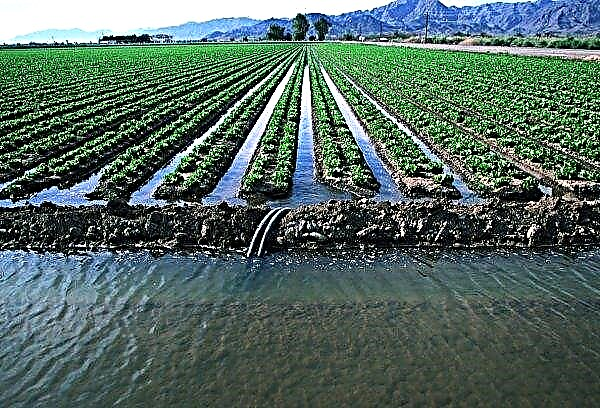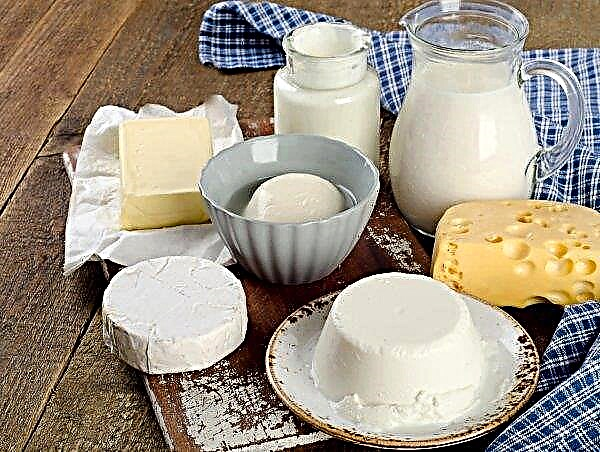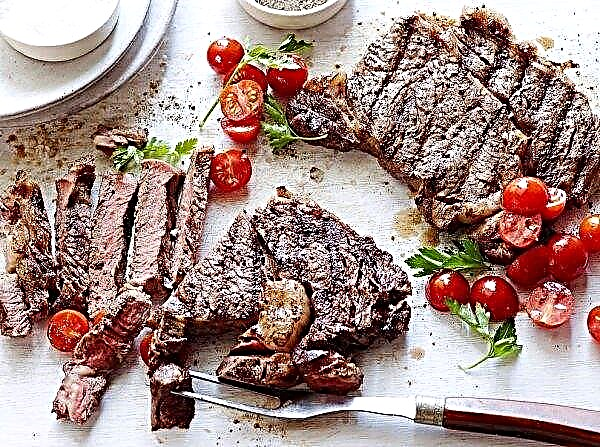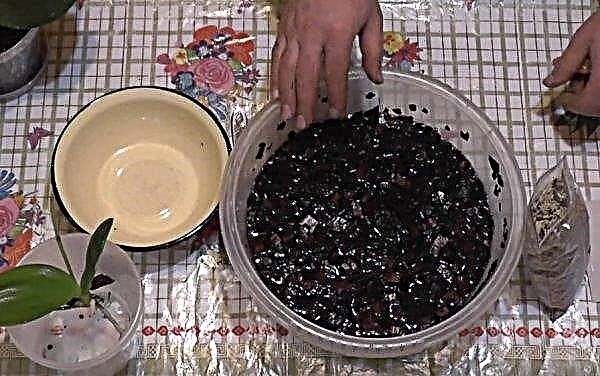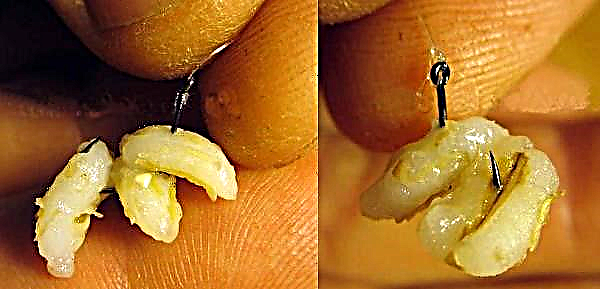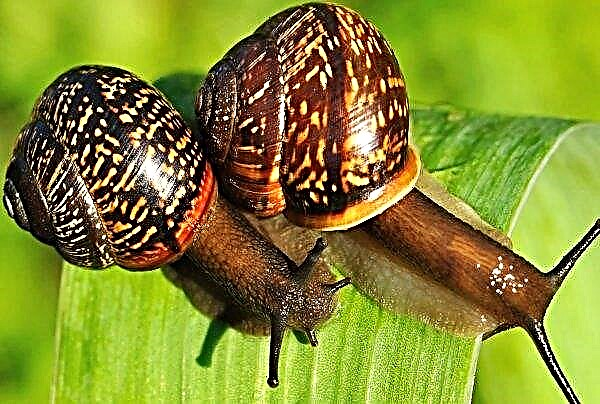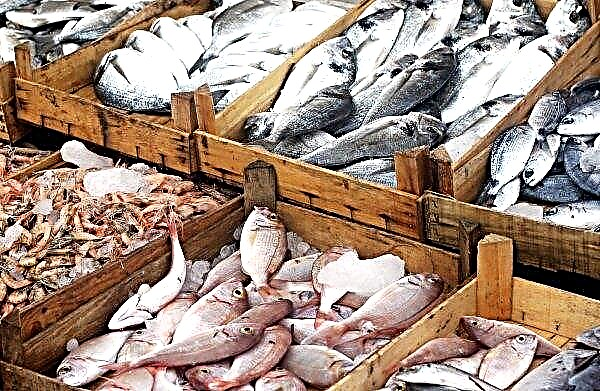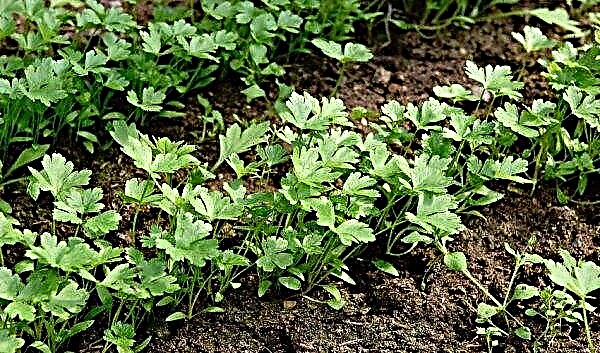Cedar and pine belong to the single family Pine, Pinales. It also includes spruce, fir and larch. These are evergreen conifers. Siberian cedar pine, or Siberian cedar - from the genus Pinus. This is the classification of ordinary pine. That is, these are very close relatives. The article suggests learning how to distinguish these trees by various characteristics.
Differences in appearance
Common pine is very similar to Siberian cedar. Cedar is widely distributed in Western Siberia and in the south of East; it grows south of Kazakhstan to China. And the common grows - throughout Eurasia. And in Britain it grows, and in Lapland, and in China, its range is wide. She is also a frequent visitor in mixed forests. Coniferous relatives are similar, they may be next to each other. Read more about how to distinguish them according to different criteria.
On needles
Consider the branches of pine and cedar:
- the first 2-3 needles in a bunch;
- another has 5 of them.
Did you know? According to legend, Nymph Pitis was very fond of the god Pan, and the god of the north wind took and turned her from jealousy into a tree that is always green - Pinus. Hence the name of the genus of trees.
But the length of the needles is worth paying attention to:
- pine about 4-6 cm;
- with a relative - up to 14 cm.
 And most importantly, cedar needles are soft, trihedral in section. Pine needles are stiffer, they are slightly curved.
And most importantly, cedar needles are soft, trihedral in section. Pine needles are stiffer, they are slightly curved.
Height
Pine can grow up to 25–40 m. On the southern coast of the Baltic, trees reach 50 m in height. Cedar, which grows very slowly, can also grow up to 35–40 m, but usually the height of the tree is 20–25 m. The crown of the cedar is multi-peaked.
And the pine - cone-shaped, rounded on top. Often the trunk changes the bend in case of damage that is caused by leafworms on the shoot. The trunk of the Siberian species is even, therefore the tree has a stately beautiful appearance.
In size and shape of cones
During fruiting, female cones are formed on the tops of fresh cedar shoots, male cones with pollen are formed at the base of the growth of the current year.
Ripe cones are characterized by:
- large size;
- elongated ovoid form;
- a purple-brown hue;
- up to 8 cm wide and 13 cm long.
 Cedar cones ripen after 14 months, or even after 15. They fall whole the next fall, each may have more than 100 seeds.
Cedar cones ripen after 14 months, or even after 15. They fall whole the next fall, each may have more than 100 seeds.
And pine has other fruits:
- male up to 12 mm, female - 3–6 cm in length;
- men's color - from yellow to pink;
- the shape of the female cones is symmetrical conical;
- color - from gray-brown to gray-green.

Pine cones that were pollinated 20 months ago ripen in late autumn or early winter. First they open, and only then they fall. The shape of the scales is noticeable - almost even rhombic (cedar has a flattened rhombus). The seeds of Siberian pine are familiar to everyone - these are nuts, and pine seeds are small with “wings”.
Did you know? Cedar oil in its chemical composition has no analogues.
Along the trunk and bark
The fact that the trunk of the cedar is straight, and the pine can bend, was already said above. Cedar color - gray-brown. Branching is whorled. The bark differs as follows: the pine bottom is scaly, brown with a gray tint, has cracks, and the higher the bark, the thinner.
It peels in the upper parts of the trunk and on branches, red-orange in color, bright. The bark of a Siberian relative is grayish-brown, scaly - in old trees.

Lifetime Differences
Cedar is a true old-timer. Reaches 500 years, and sometimes 800 years of age. There are suggestions that such a tree can survive a thousand years. And his relative is more modest - on average, her life is 400 years.
Of course, there are ancient representatives, for example, spinous intermountain pine, growing in the United States. She is at a high altitude (3 thousand meters above sea level), and her age is venerable - she is 4850 years old. Even the name of the tree is suitable - Methuselah. But this is another kind of family.Important! The density of cedar wood is lower than that of pine (the first resembles a cork), the drying of the material is extremely small. Cedar is warmer and more reliable.
In Japan, a tree grows, whose age is unknown, but not less than 2000 years old. They even suggest that the Japanese old-timer is about 7000. However, these species are special and do not germinate in Russia. In any case, it turns out that cedars - namely real ones - break records in terms of life.

Flowering time
Pine blooms in May, and cedar in June. Of course, this is not blooming in the literal sense, because the trees are gymnosperms. The male cones that people observe are called, for simplicity, their "flowers", and pollen grains ripen in them. Pine pollen is so light that it can fly thousands of kilometers. Over time, the bump changes color - it becomes yellow, pinkish.
Female sprouts are a little further from male, on different branches. Such flowering occurs every year, and seed ripening - in the early autumn of next year. A bump is hibernating. And in March or April, at + 10 ° C, the cones open, the seeds fly out. In the natural environment, pine gives fruit no earlier than 10 years of life.

Cedar seeds ripen no earlier than a year after the appearance of male cones. In June of the following year after pollination, pollen begins to fertilize. In September, the bump ripens. It turns out that the tree harvest is once every two years. In the fifth year, the yield is better, and after another 10-15 years - the number of cones is very large. Seeding begins late - from 25–40 years of life. And in old trees, fruiting is coming to naught.
Differences in the log house
Cedar is a porous wood. The color of the log house is pinkish and warm. Over time, the tree turns red. Growth rings are visible well, slightly blurry. The structure is homogeneous, even. And the smell is persistent - it does not disappear for a very long period of use of wood.
Pine logging is harder, heavier. It does not darken, but fades, and the color is slightly grayish. The aroma is appropriate, pine, eventually disappears, disappears. The place of a knot at the cedar is striking - it is clearly distinguished by a reddish tint, but the relative does not have such a feature.
Important! If the cedar log begins to turn blue after removing the bark, then it is affected by a fungal disease, which, however, does not spoil the properties of the material.
Here, in fact, the main differences between the two species of the Pine family are described. You can use simple notes: the cedar is higher, lives longer, blooms later, has five needles in a bunch on the shoot, and brings useful gifts - cedar cones.
The beautiful, fragrant wood of this tree becomes more beautiful over time, which is why it is used as a finishing and decorative material. Pine is used more as the main material, the flavor loses, and the properties of wood are slightly worse.

